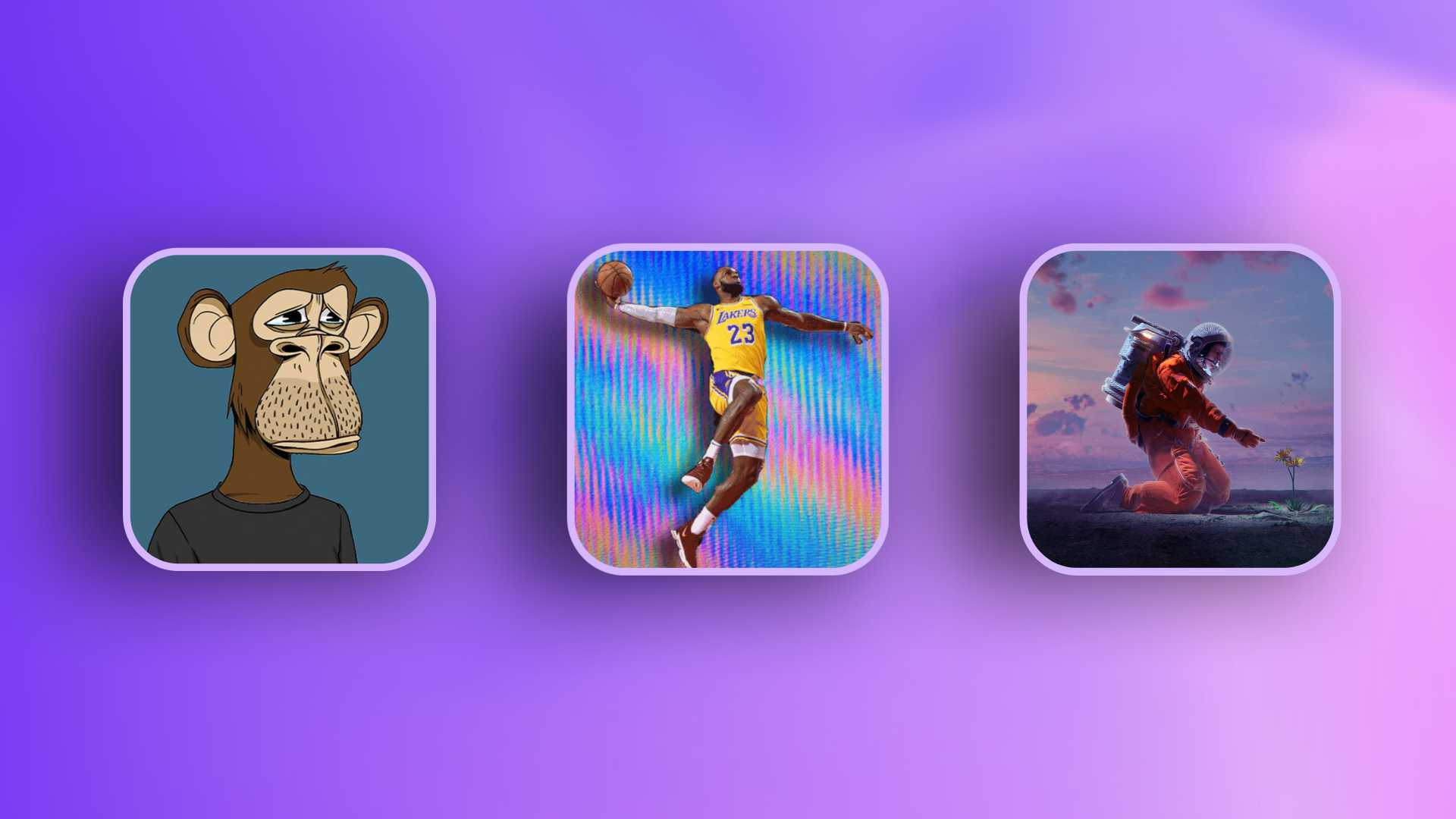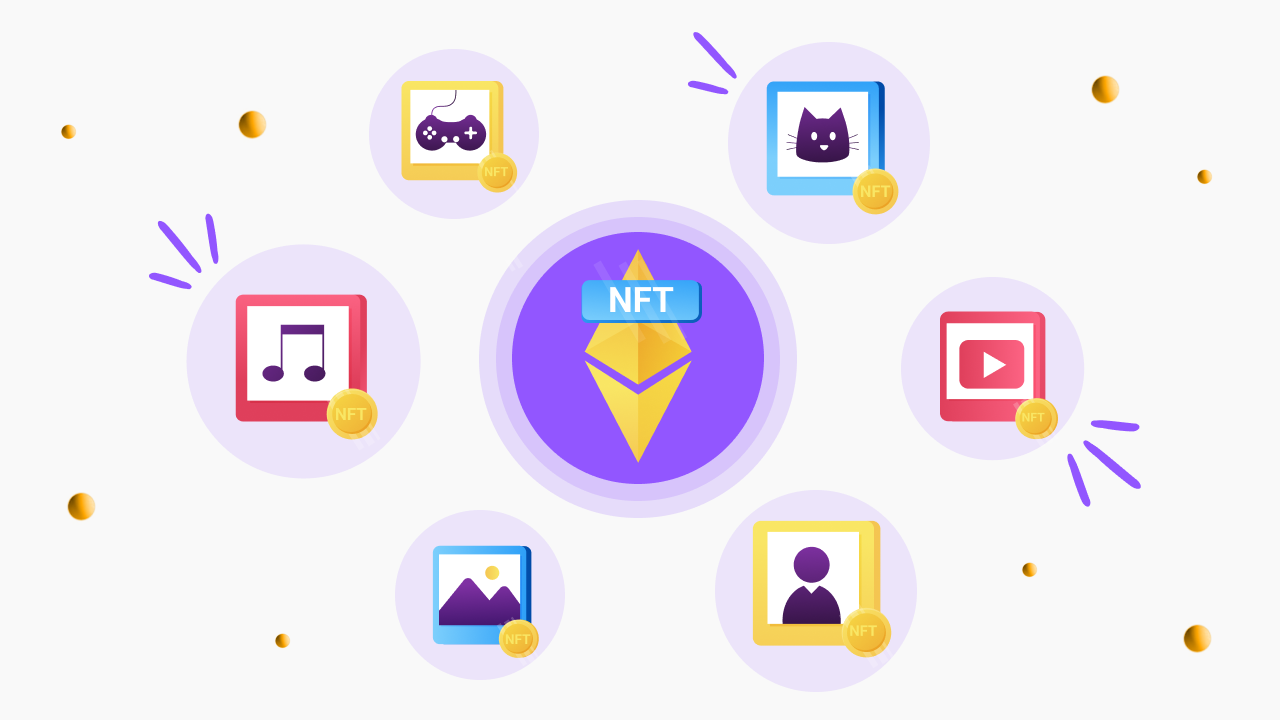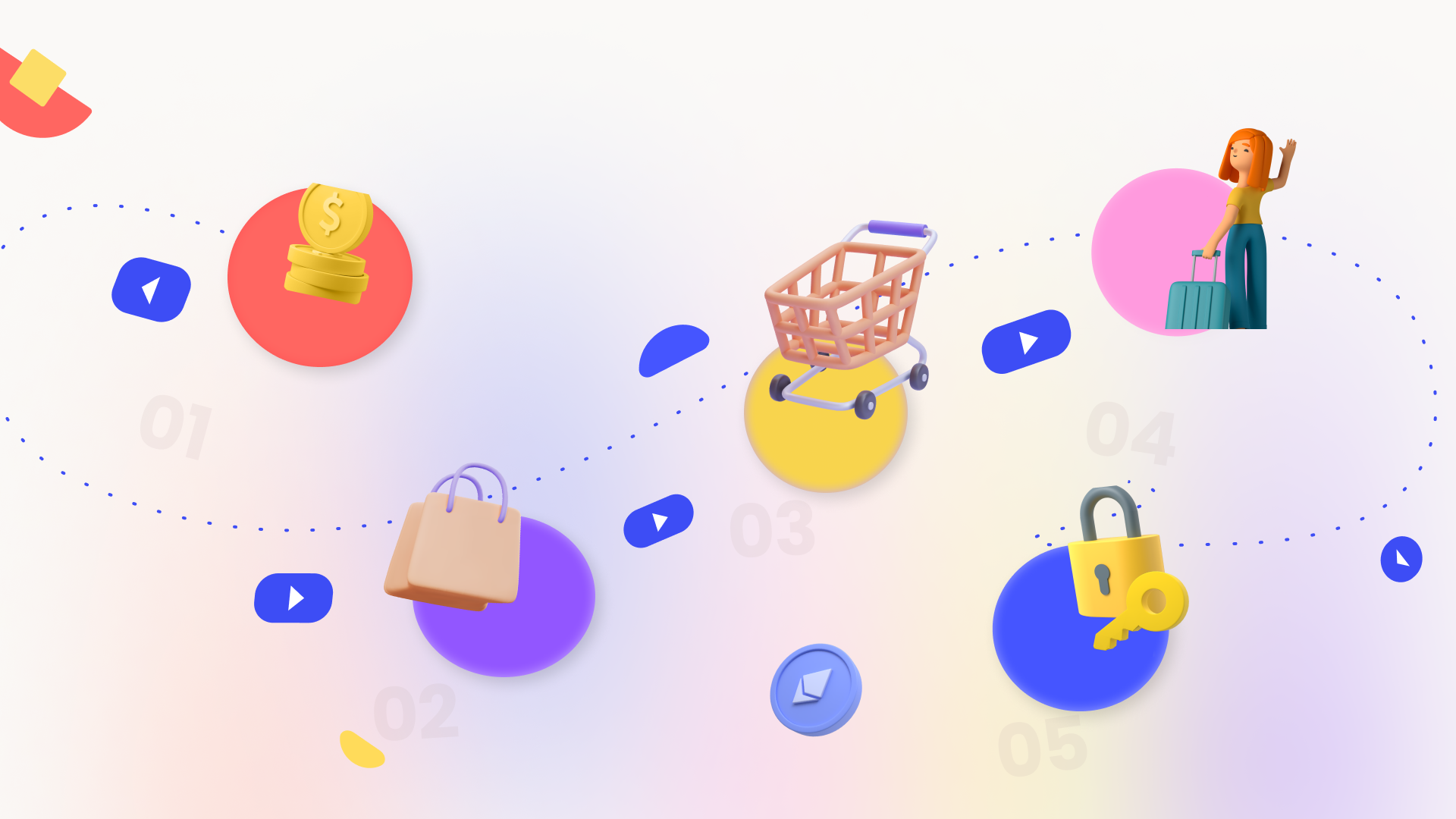The 7 Types of NFTs (And How to Utilize Them)

Repeat after me: NFTs are more than just JPEGs.
It's easy to forget that behind each token is layers of technology supported by the blockchain. Artwork NFTs were predominant for a while, but other use cases have started to take hold as brands realize their potential beyond generating revenue.
1. Artwork
One of the most popular forms of NFTs is artwork, especially since the sale of Beeple’s Everydays - The First 5000 Days sold for a record setting $69M, subsequently launching NFTs into mainstream consciousness.
The inherent utility of NFTs (authenticity) is a direct parallel to the real world utility of art itself. NFT artwork is typically released as either a 1/1 or a series. A 1/1 is a single, unique edition that can only be owned by one person at any given time, while a series is a limited release with a set number of tokens.
How creators are using artwork NFTs:
Frank Stella’s New NFTs Come With the Right to Sell His Art
2. PFPs & Avatars
If you’ve noticed some of your twitter friends looking more and more like less than enthusiastic monkeys as of late, then you’ve encountered a Profile Picture (PFP)/Avatar NFT. Twitter recently launched a feature that allows users to link their crypto wallets and thus use NFTs as their profile picture, including details like their blockchain address to verify proof of ownership.
How brands are using artwork PFPs & Avatars:
Clinique’s Glam Squad Bridges Gap in Avatar PFP Makeovers
3. Photography NFTs
Similar to artwork, NFTs are a useful tool for photographers to engage their communities. With the added transparency and royalty functionality provided by the blockchain, photographers can offer limited releases of their work or “print” collections in the same way they would sell editions via retail or eCommerce.
How creators are using photography NFTs:
How NFT Photo Sensation Twin Flames Landed at Christie’s
4. Collectibles
The Collectibles Market and NFT Report estimates that the size of the collectibles market in 2021 was a whopping $402B - and expected to hit $1T by 2032. Fans are eager to collect digital trading cards, video clips, memorabilia, tickets, and more. Right now, the original creators or owners of these items only profit off of the initial sale. As NFTs, these items have even more value to their original creators because of the royalties that can be collected with each subsequent sale thereafter.
How brands are using collectibles:
Disney NFTs: Enter the Web3 Worlds of Marvel, Star Wars, and More
5. Generative Art
Generative art uses autonomous technology as a medium just like pastels, chalk, or paint. Although the popularity of NFTs and AI technology have generated an uptick of interest in generative art, the term was originally coined in the mid-1960s with some of the earliest works produced around the same time by artist Nate Plotter. The “art” aspect of generative work comes from the artist who writes code (always with an element of randomness) that produces work that brings the artists’ vision to life.
How brands are using generative art:
Tyler Hobb’ Fidenza NFT Project Gets $1M Pump Over 48 Hours
6. Music NFTs
The blockchain’s ability to eliminate middlemen, allowing creators to directly interact with fans, is of particular interest to the music industry. Where artists today are subject to interests and demands of their labels and various streaming platforms, music NFTs could allow artists to monetize their work while maximizing their ownership (and profit). Additionally, music NFTs can be layered with other types of utility to grant VIP access, promote tours, and reward fan loyalty.
How musicians are using music NFTs:
How Music NFTs are Shaking Up the Music Industry for Fans and Artists
7. Gamified NFTs
Let’s face it: we’re addicted to gamification. It’s baked into every element of modern technology, from mobile apps to project management software and, of course, actual gaming itself. The popularity of online games like Fortnite, which are free to play but make money off of in-game microtransactions via its in-app currency, should tell you everything you need to know about the potential value of gamified NFTs. Fortnite alone brought in $5.8B last year with the entire market estimated at $198B in 2021. Gaming NFTs can also be leveraged by brands and creators, and apply the same concepts allowing players to buy, sell, and trade tokens in play-to-earn environments.
How brands are using gamified NFTs:
Fashion Giant Gap Launches Gamified NFTs on Tezos
The Future of Loyalty = Utility
We're banking on the potential of tokens backed by utility, like music and gamified NFTs, to up-level the current state of brand loyalty. Customers (and regulators) are starting to take notice of the lopsided state of web2. In a post-cookies world, customers want control of who they give their data to and why. As a result, brands will have access to more reliable data (think quality over quantity) from consumers who consciously opt in via loyalty programs, memberships, and benefits that are backed by blockchain technology. Instead of a web2 middleman, web3 creates opportunities for you to build 1:1 relationships with your customers at scale.


